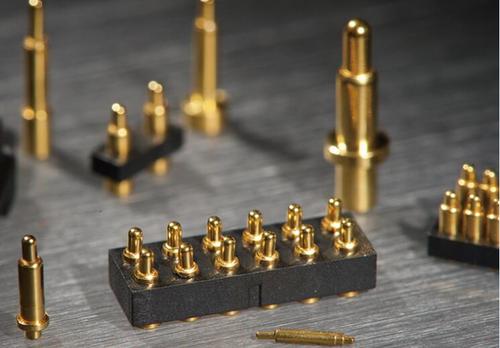Time:2025-06-20 Views:1 source:News

Stamping processing for pogopin is a widely - used manufacturing method that offers high - efficiency and cost - effectiveness in producing these small yet crucial electrical connectors. Pogopin, also known as spring - loaded pins, are commonly used in various electronic devices for electrical connection and signal transmission.
The stamping process for pogopin begins with the selection of suitable metal materials, typically brass or stainless steel, which possess good electrical conductivity, mechanical strength, and corrosion resistance. These materials are first cut into thin strips or sheets. Then, through a series of progressive stamping dies, the metal strips are formed into the desired shape of the pogopin. The stamping dies are precisely designed to perform multiple operations in sequence, such as blanking, bending, and forming. For example, in the blanking process, the metal strip is cut into individual pieces with the approximate shape of the pogopin body. Subsequently, bending operations are carried out to create the specific geometries, like the spring - loaded structure and the contact tip.
One of the key advantages of stamping processing for pogopin is its high - speed production capability. Modern stamping machines can produce a large number of pogopin components in a short time, meeting the mass - production requirements of the electronics industry. Additionally, stamping allows for relatively high precision in forming the pogopin. With advanced die - making technology, the dimensional accuracy of the stamped pogopin can be controlled within a narrow tolerance range, ensuring proper fit and reliable electrical connection when assembled into electronic devices. However, the complexity of the pogopin design may be somewhat limited by the stamping process. Intricate shapes or features that require deep drawing or complex three - dimensional forming may be challenging to achieve solely through stamping. Quality control in stamping - processed pogopin involves strict inspection of dimensions, surface finish, and mechanical properties. Visual inspection is used to detect any surface defects, while dimensional measurements are carried out using precision instruments to ensure compliance with the design specifications.
Read recommendations:
American standard to Tesla adapter (color)
3.0 male and female threaded charging gun terminals
Magnetic connector manufacturer
Manufacturing Processes of Single-Pin Spring Pogo Pins
Troubleshooting Issues When Using Spring Machines to Produce Pogo Pin Probes